Hollow-handled “Rambo” knives are one of those common purchases people pick up on the cheap. Maybe they saw some positive reviews on Amazon and thought to themselves, “it’s only $10, so even if it’s not great and doesn’t last, no biggie.” But those knives are dangerous and shouldn’t even be used as a “beater” or starter knife.
Like many preppers of a certain age, I grew up running around the woods with one of these knives. I actually still have one of the ones I carried on Boy Scout trips in my office. We’re all lucky we didn’t hurt ourselves, because the potential was definitely there.
The problem with these knives, like the $8 Harbor Freight special pictured above, is that they’ll fail on you catastrophically at the worst possible moment, quite possibly injuring you or a bystander in the process.
The danger comes from the construction method. With a few notable and very expensive exceptions, the hollow-handled knives all share a fatal flaw: the blade is attached to the handle via an internal screw, so the bond between the blade and handle is very weak.
It doesn’t take much stress — especially side-to-side stress — to snap that screw and send the bare blade flying while the handle is still in your grip. This makes chopping and prying with such a knife exceptionally dangerous.
The majority of the unsafe hollow-handled knives in this category are in the $10 to $20 range, and are available at “big box” retailers and most online outlets. As a general rule, I wouldn’t trust any hollow-handled knife that isn’t forged from a single piece of steel, no matter who sells it and for how much, but more on that, below.
It’s expensive to do it right
Despite all I’ve said above, it is possible to find a hollow-handled knife that’s not terrible, but you have to be prepared to pay for it.
The Randall Model 18 is the classic, Vietnam-era example of such a knife, and is probably what the First Blood folks had in mind when they reached out to Gil Hibben to design the movie blade. You can still score one of these if you’re willing to pay almost $500.
Then there is the Chris Reeve Shadow series, forged from a single, round billet of A2 steel. These aren’t made anymore, but you can sometimes score one on the after market. Here is a detailed article on how these knives were made, complete with cutaways.
If you want to go way downmarket and pick up a knife on this pattern that’s more affordable but still expensive, the Boker Plus Apparo is under $200 and has what is by all accounts a decently strong blade/handle join achieved with aircraft-grade epoxy. But in our humble opinion, you’d have to be high to choose this over a similarly priced or cheaper knife from our survival knife review. There is just no way that is a practical knife choice at that price, especially given that it’s old-school 440C (a great steel when properly heat-treated, but not often found in knives in that price range).
Along these same lines is the Kizlyar Supreme Survivalist X, a Russian-made knife that offers the hollow handle, serrated spine, and general “Rambo” factor, but in a better steel selection: either AUS-8 or a much more expensive D2. These are well enough reviewed out there, but call me extremely skeptical. Maybe if I had a nephew I really didn’t like I might put one of these in his stocking, but I’d wrap it with a liability waiver that he had to sign, first.
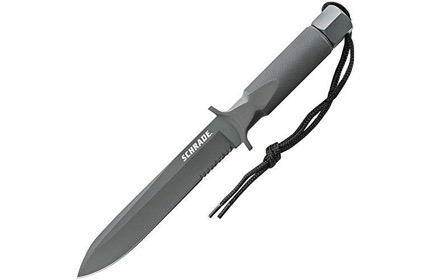
Schrade SCHF1
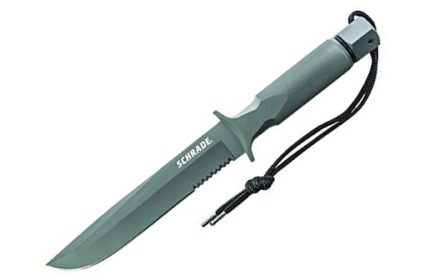
Schrade SCHF2
Finally, there are the only hollow-handled knives on the market right now that I’d consider paying for: the Schrade SCHF1 and SCHF2, both of which are a single-billet design like the Chris Reeve mentioned above, but at just half a Benjamin. The knives, which are distinguished only by their blade shapes and are otherwise alike, are made of tough 1070HC steel, and have a nice, knurled grip. The reviews are positive, and given the kinds of solid reviews the rest of Schrade’s fixed-blade lineup is getting I’d imagine they’re a good enough value for the money.
Moving outside the knife world, RMJ Tactical offers the hollow-handled Shrike ‘hawk, which is what I’d personally go for if I just had to have some sort of edged tool with a survival kit inside the handle. RMJ is legit, and the Shrike is a real-world “operator” tool aimed at law enforcement and the military. It’s $480, though, so only those with deep pockets (or department budgets) need apply.
The reason good, hollow-handled fixed blades are relatively expensive and rare is that they’re hard to make and they just don’t offer much of a real-world advantage over a good full-tang design. Beyond the cool factor of having your survival kit inside your knife, they don’t do anything you can’t also do with a small survival pouch mounted on your knife sheath or belt. Why go to the expense and trouble of making something like this, when a simple belt pouch makes it pointless?

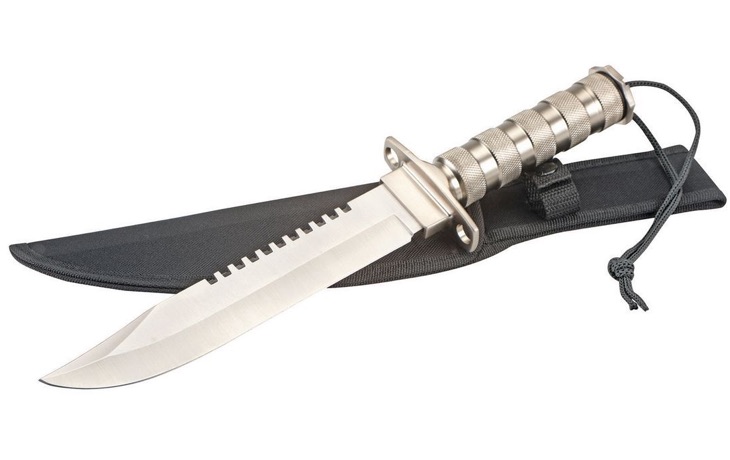

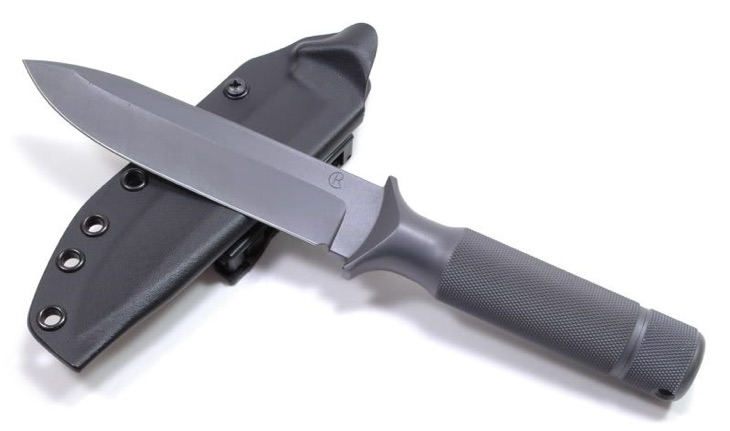
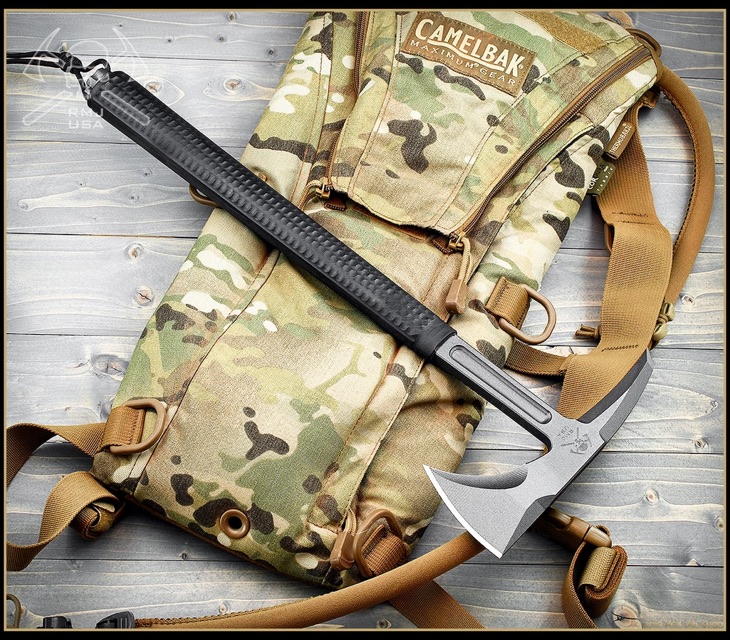
You are reporting the comment """ by on